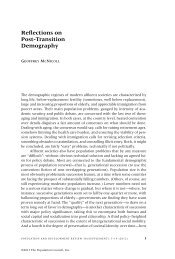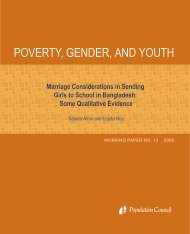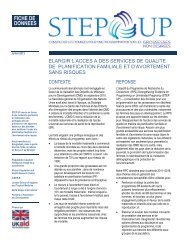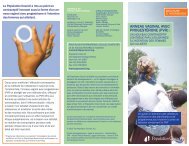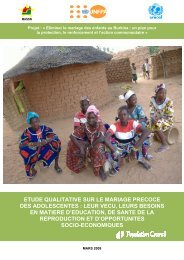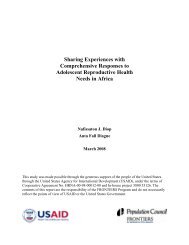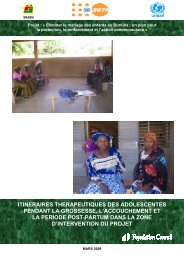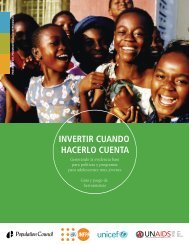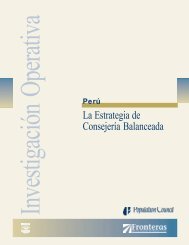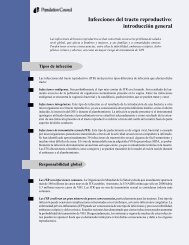Community Health Volunteer's Training Manual - Population Council
Community Health Volunteer's Training Manual - Population Council
Community Health Volunteer's Training Manual - Population Council
Create successful ePaper yourself
Turn your PDF publications into a flip-book with our unique Google optimized e-Paper software.
Module 2 <strong>Community</strong> Mobilisation and Tools<br />
98<br />
effectiveness of the survey, you should use a combination of methods. What are these<br />
methods for conducting baseline survey?<br />
Interview: This involves face to face interaction between the person asking the question<br />
(interviewer) and the person answering the questions (interviewee).<br />
Questionnaires: This consists of writing down a number of questions for the respondent to<br />
complete him/herself. Alternatively, the interviewer could ask the respondent the questions<br />
and fill the questionnaires.<br />
Focused group discussions: Having discussion with a specific group of people (8-12) on<br />
specific topics. The researcher records the responses from the group members.<br />
Large group discussions: This is where all community members take part in the discussion<br />
concerning the entire community.<br />
Participant observation: This is where the one collecting the information about the<br />
community resides in the community and takes part in all community activities but makes<br />
independent observations.<br />
Role of the <strong>Community</strong> <strong>Health</strong> Volunteer when conducting a<br />
baseline survey<br />
During community entry and awareness creation CHVs act as liaison between the<br />
researchers and the community.<br />
CHVs help to identify the boundaries of the target population or community.<br />
CHVs also assist in compiling the profile of the study area.<br />
CHVs assist in listing the household members and numbering the houses. If complete<br />
enumeration is to be done CHVs and VHCs help ensure that everybody is counted.<br />
During dissemination of findings, VHCs help in organising the venues, communicating<br />
messages to stakeholders and participating in the dissemination activities.<br />
VHCs and CHVs make follow-ups on some action points from the presentations and<br />
recommendations.<br />
Unit Summary<br />
In this unit, we discussed some key concepts in data management as well as important<br />
documents that every community should have in order to be able to plan and execute<br />
community projects effectively. These include the community profile and community<br />
demographic register which captures the important features in the community. The<br />
community demographic register is described as the document that contains detailed<br />
information about the various individuals, households and population groups. The<br />
community map illustrates the various resources and health related institutions and<br />
personnel within the community and their locations. We have also looked at what a baseline<br />
is how it is conducted and the role of the volunteer in that exercise.



